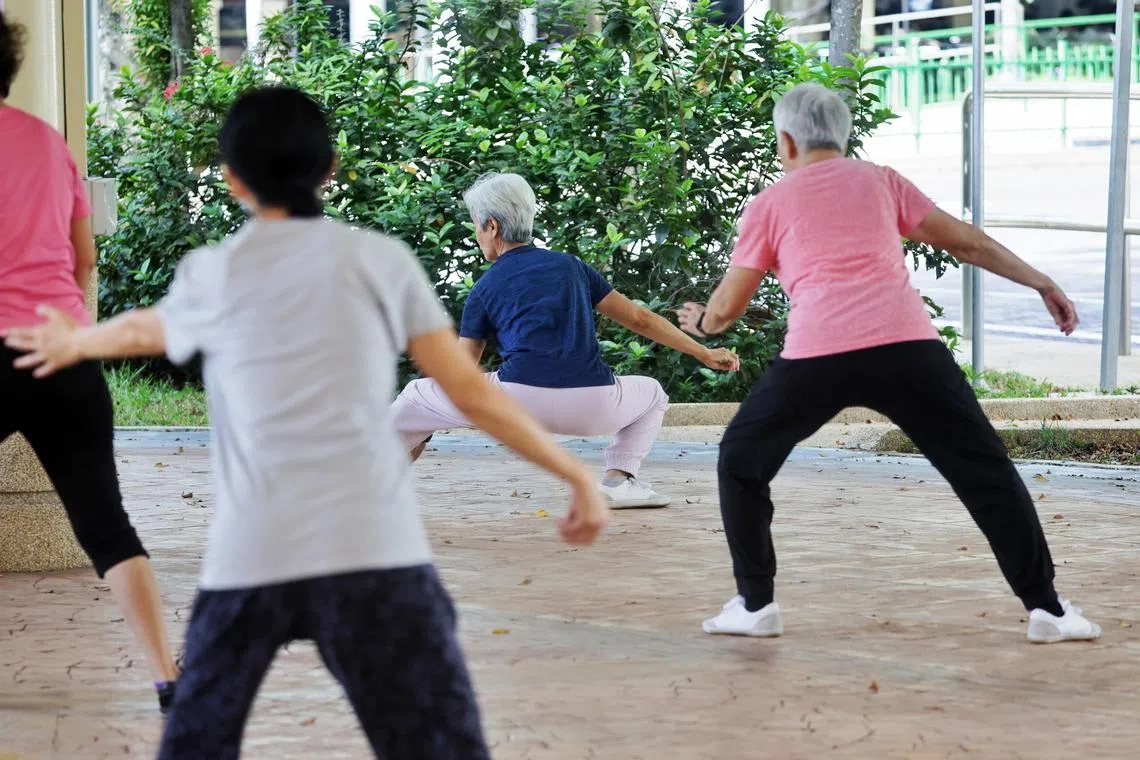Care Corner to expand network of centres in Toa Payoh to help seniors age well
Sign up now: Get ST's newsletters delivered to your inbox

Seniors in Toa Payoh will be among the first to benefit from the new Age Well Neighbourhoods national initiative.
ST PHOTO: KELVIN CHNG
Follow topic:
- Toa Payoh, with a high senior population, will be first to benefit from the Age Well Neighbourhoods initiative, as announced by PM Lawrence Wong.
- The initiative expands neighbourhood services like home repairs, housekeeping, meal deliveries and community health posts to support seniors aging in place.
- Care Corner Singapore will be adding six satellite centres in Toa Payoh to improve accessibility for seniors.
AI generated
SINGAPORE – Care Corner Singapore plans to set up six new satellite centres in Toa Payoh over the next two years so residents need not walk too far to access active ageing services such as exercise programmes and community dining events.
This expansion will support a new national initiative that aims to help seniors age with dignity within their own communities.
Seniors in Toa Payoh will be among the first to benefit from the new Age Well Neighbourhoods national initiative
Care Corner, which provides social and healthcare services, currently runs seven active ageing centres in Toa Payoh and two in Woodlands.
Ms Sharon Tang, head of the Care Corner Active Ageing Group, said that having more sites will mean being closer to seniors, many of whom prefer not to travel too far from home.
“We hear feedback from seniors about why they are not going out of the house. They would rather not go for their medical appointments. So we understand that concern,” said Ms Tang.
Age Well Neighbourhoods take inspiration from the Community Care Apartments
Healthcare services will be made more accessible to the elderly in the community. Health posts, set up by public hospitals, will also deploy nurses on the ground more regularly.
For the seniors, having this initiative is somewhat akin to being in a retirement village, without having to move to a separate, isolated area.
PM Wong said that new sites are being identified for active ageing centres in Toa Payoh, so that seniors do not have to walk more than 1km to reach one. There are now 13 active ageing centres in Toa Payoh, up from six centres just four years ago.
Nearly one-quarter of the residents in Toa Payoh are aged 65 and above.
Madam Teng Yeng Gee, 94, who has been a Toa Payoh resident for more than 20 years, will be among the beneficiaries.
Her daughter Jessie Lim, 59, a human resources executive, said her mother, who lives with a helper, goes for regular check-ups at the nearby Toa Payoh Polyclinic.
“She (the helper) will also take my mum to do some exercises at the Thye Hua Kwan active ageing centre a few times a week,” Ms Lim said. “As long as she can live happily, we are happy for her.”
Professor Alex Siow, chairman of Thye Hua Kwan Moral Charities, which runs the Toa Payoh active ageing centre that Madam Teng goes to, said Age Well Neighbourhoods are aligned with its approach of providing seniors with a supportive environment and opportunities to build strong social connections.
Given that each neighbourhood has its own unique characteristics, demographics and needs, the key is to have flexible and localised solutions, said Prof Siow. This is because what works well in one area may not be suitable for another area with a different group of residents, he added.

Public health specialist Jeremy Lim said that the Age Well Neighbourhoods initiative is very doable as Singapore is densely built and various services can be easily accessed.
Given the high cost of manpower, however, it would be vital to provide new care models through greater technology adoption, he said.
Dr Lim cited the example of tele-rehabilitation, where therapy services are delivered remotely via videoconferencing. Sensors deployed in homes help caregivers monitor patients’ progress. Elderly patients were not receptive during early trials, but “we just didn’t try hard enough”, he said.
He suggested stronger nudges, such as prioritising patients who are willing to do teleconsultations and giving them shorter waiting times. “We have to be able to tell patients that we are capacity-constrained right now, so these are the choices we have to make,” he said.

